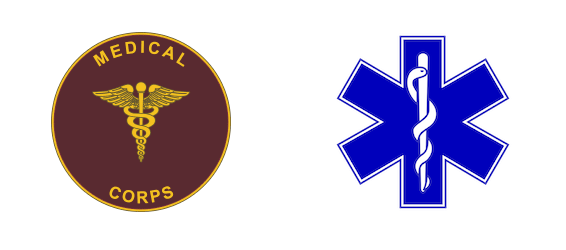In contemporary U.S. culture, the caduceus, which depicts two snakes winding around a staff, is widely used as a symbol of medicine. However, prior to the 19th century, there is limited use of the caduceus in a medical context. In ancient Greece and Rome, for example, the caduceus represented Hermes and Mercury, respectively, and the Rod of Asclepius was widely associated with medicine. While some printers used the caduceus on medical documents, this more likely represented the printer reprising its use to symbolize Mercury, a messenger or scribe, than directly to indicate medical content. The Rod of Asclepius, on the other hand, clearly was associated with medicine.

The Caduceus (left) as the symbol for the U.S. Army Medical Corps and the rod of Asclepius (right) as the symbol for emergency services.
In the 1850s, however, the caduceus began to appear on the chevrons of Army hospital stewards, and later it was designated as the seal of the Marine Hospital Service. By 1902, it had been adopted by the Army Medical Department. Contemporary reports suggest this was done in part for aesthetic reasons, and in part due to ignorance of the distinction between the caduceus and Rod of Asclepius. Col. John R. van Hoff argued there was no confusion. He claimed the caduceus was chosen, per its original association with Mercury, to symbolize merchant — and so non-combatant — status, a reference to the fact that many of the men displaying it supported medical efforts but were not medical practitioners themselves. After World War I, the caduceus would be adopted by the Navy Hospital Corps as well.
More recently, both symbols continue to be used in a medical context. The current Army Medical Department and U.S. Air Force medical insignias both bear the Rod of Asclepius. Health-care organizations frequently use either symbol, with professional associations more likely to display the Rod of Asclepius and commercial organizations and hospitals more likely to use the caduceus.